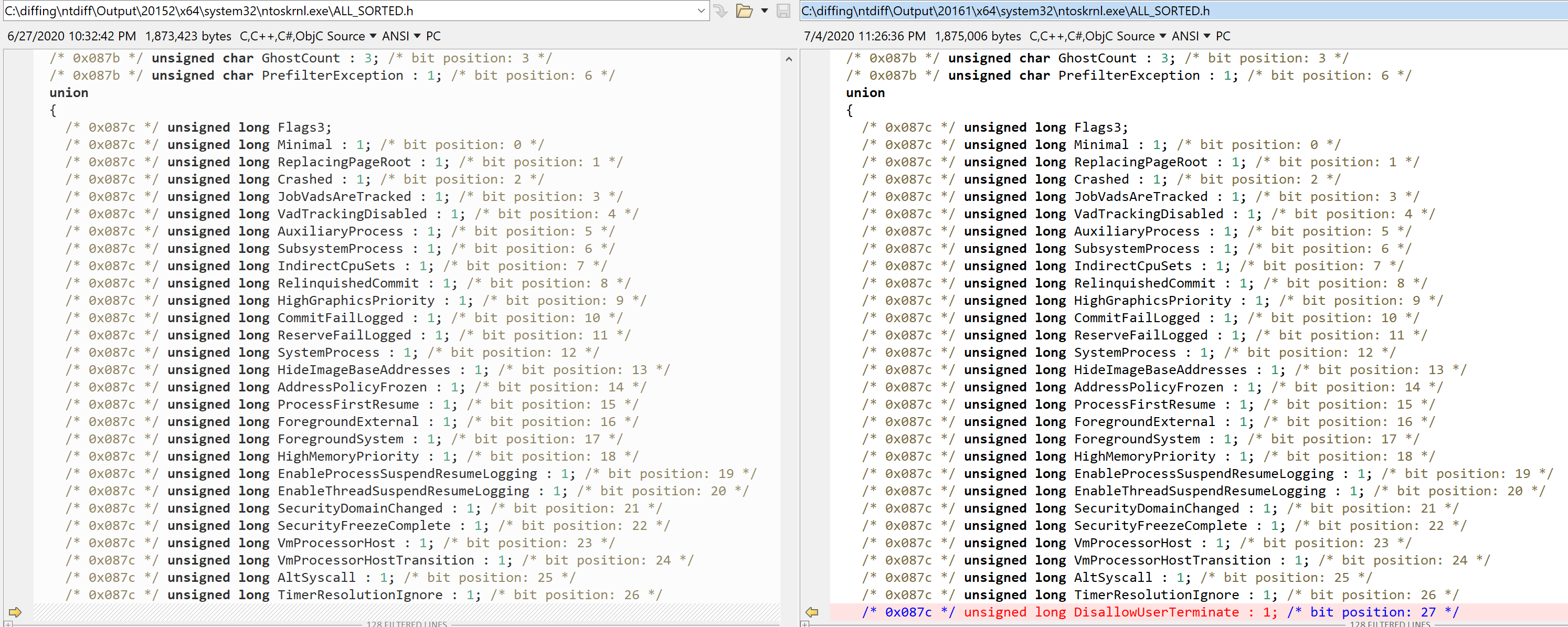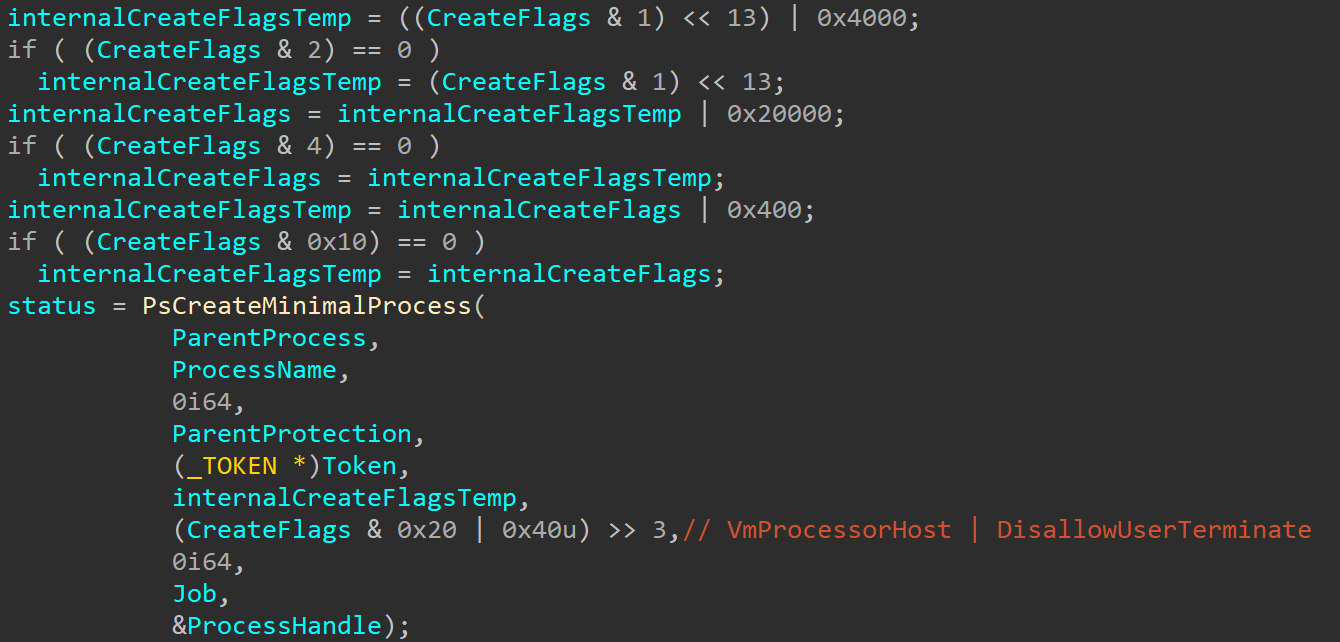We are all familiar with Microsoft’s love for creating new and exciting ways to prevent certain processes from being terminated by the user. First were Critical processes in Windows XP 64-bit and Server 2003, which crashed the kernel if you killed them. Then, came Protected Process Light (PPL) in Windows 8.1, which prevented you from killing them at all. Perhaps it prevented too many other things too, because in a recent Windows 10 update, build 20161, we see yet another new addition to the EPROCESS flags (Flags3, actually), called DisallowUserTerminate:
As this flag’s name is pretty clear, its purpose doesn’t need much explanation – any process that has this flag set cannot be terminated from user-mode. We can see that in PspProcessOpen:
A user-mode caller can’t open a handle to a process that has the DisallowUserTerminate flag set if the requested access mask contains PROCESS_TERMINATE.
So where is this flag set, and does this mean you can protect your processes from termination? The answer to the second question is simple – not really. For now, this flag can only be set by one path, and it’s one specifically used for creating Hyper-V Memory Host (vmmem) processes.
Internally, this flag is set on process creation by PspAllocateProcess, based on the input parameter CreateFlags – flag 8 (let’s call it PSP_CREATE_PROCESS_FLAG_DISALLOW_TERMINATE) is what sets DisallowUserTerminate as you can see below:
Unfortunately, this function only has 2 external callers, which always pass in 0 as CreateFlags, which obviously doesn’t allow one to set any of these flags. The third, internal caller, is PsCreateMinimalProcess, which has a few internal uses in the system, such as the creation of Pico Processes used by WSL, and other special system processes such as “Memory Compression” and “Registry”. Minimal processes are also created by VmCreateMemoryProcesses, which is one of the APIs that’s exported through the VID Extension Host that myself, Gabrielle, and Alex described in our INFILTRATE 2020 talk.
Unlike the exported functions, the PsCreateMimimalProcess internal API receives the CreateFlags from its callers and forwards them to PspAllocateProcess, and VmCreateMemoryProcesses passes in PSP_CREATE_PROCESS_FLAG_DISALLOW_TERMINATE (0x8) unconditionally, as well as PSP_CREATE_PROCESS_FLAG_VM_PROCESSOR_HOST (0x4) if flag 0x20 (let’s call it VMP_CREATE_PROCESS_FLAG_VM_PROCESSOR_HOST) was sent to it. You can see this logic below:
As mentioned, looking for callers for this function in IDA will not show any results, because this function, which is not exported, is shared with Vid.sys through an extension host and called by VsmmNtSlatMemoryProcessCreate when new vmmem processes are needed to manage memory in virtual machines managed by Hyper-V, and/or to contain the Virtual Processor (VP) scheduler threads when eXtended Scheduling (XS) is enabled as part of Windows Defender Application Guard (WDAG), Windows Containers, or Windows Sandbox.
Checking the value of Flags3 in vmmem processes in the new build shows that DisallowUserTerminate is enabled for these processes, and:
Sadly, no other process can use this capability for now without manually editing the EPROCESS structure, which is extremely not recommended, as any code doing this is bound to break often and crash a lot of systems. So I’m sure 5 different AV companies are already adding code to it.
Read our other blog posts:
- Secure Kernel Research with LiveCloudKd
- Troubleshooting a System Crash
- KASLR Leaks Restriction
- Investigating Filter Communication Ports
- An End to KASLR Bypasses?
- Understanding a New Mitigation: Module Tampering Protection
- One I/O Ring to Rule Them All: A Full Read/Write Exploit Primitive on Windows 11
- One Year to I/O Ring: What Changed?
- HyperGuard Part 3 – More SKPG Extents
- An Exercise in Dynamic Analysis




